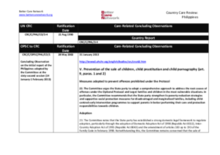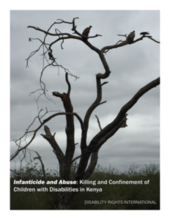Displaying 451 - 460 of 1087
This country care review includes the care related Concluding Observations adopted by the Committee on the Rights of the Child and the Committee on the Rights of Persons with Disabilities.
This article investigates policy in the Philippines relating to the protection of children, which, despite policy efforts in this space, and growing evidence of child maltreatment and its impact, remains unexamined by the literature.
This study compared the risk difference and further investigated the association between the category of mental disorders and child abuse perpetration in Taiwan.
This systematic review aims to review studies using self-report maltreatment to capture child maltreatment prevalence rates worldwide.
This study from Global Social Welfare examined the contributions of potentially stigmatizing war violence exposures and more recent post-conflict reintegration experiences to intimate partner violence for girls in Sierra Leone. Overall, this sample reported middling levels of community reintegration, and similar average rates of family reintegration.
This volume examines typical and atypical development from birth to the preschool years and identifies what works in helping children and families at risk.
This paper deals with the design and development procedures involved in child protection practices in India.
In the present exploratory study 69 case-files of children referred to a Dutch national center for residential youth care for children with intellectual disabilities (ID) were analyzed to assess the prevalence and associations of Adverse Childhood Experiences (ACEs).
This paper explores the literature of the existing interventions that are specifically used with American Indian families affected by child abuse and neglect.
This report is the product of a two-year investigation by Disability Rights International (DRI) into institutions and orphanages across Kenya. The report describes the "egregious human rights violations" perpetrated against children with disabilities in Kenya, particularly those who are confined to institutions and "orphanages."


